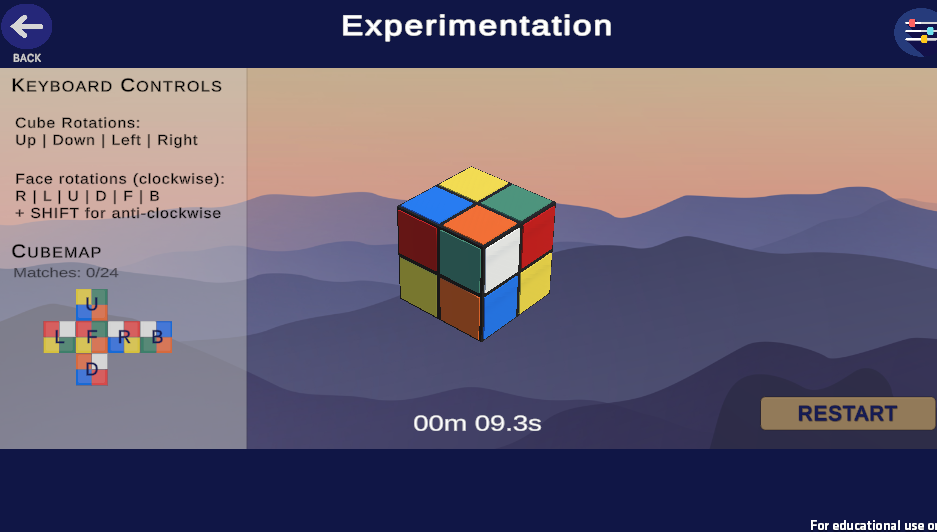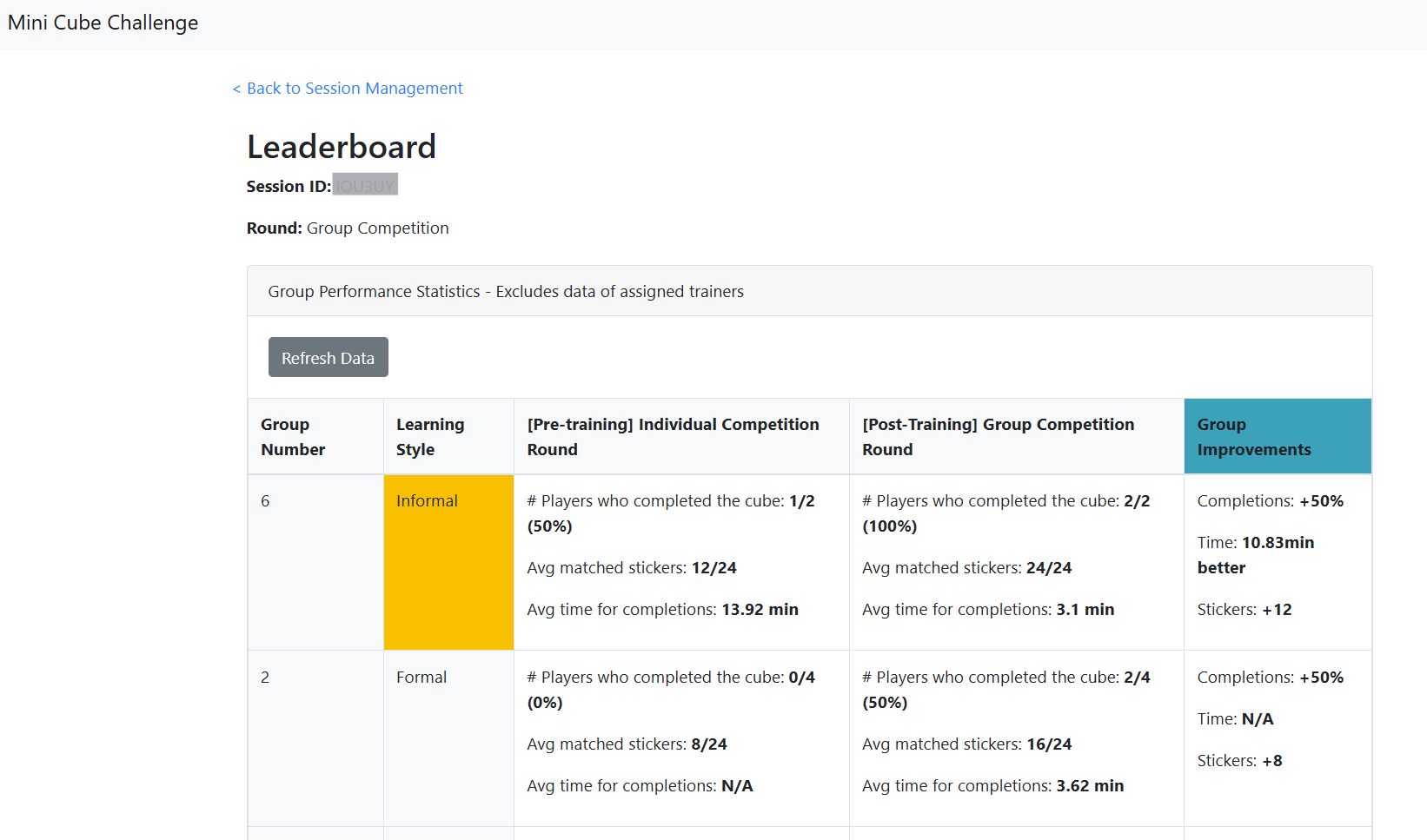


Project Description
Mini Cube Challenge is a web-based application that aims to facilitate students’ understanding of the 7 learning orientations and 10 facilitating factors of organizational learning through an activity that requires them to apply these concepts for learning. The game allows students to compete with one another for the fastest time in solving a 2x2 Challenge Cube. The fastest students will then be assigned as instructors to teach other students how to solve the cube more efficiently. This cumulates in a final challenge round where the class competes for the fastest time.
At its core, organizational learning involves the acquisition, interpretation, and application of knowledge within an organizational context. The sharing of such knowledge is also an integral part of organizational learning as it goes beyond individual learning by encompassing the collective intelligence, experiences, and insights of the entire organization. This process is not confined to formal training programs but extends to the day-to-day interactions, problem-solving activities, and shared experiences that shape the organization's identity.
Mini Cube Challenge seeks to do this through the following learning objectives:
-
Students will be able to understand organizational learning, distinguish it from individual learning, and explain its significance in navigating VUCA environments.
-
Students will be able to identify and analyse various mechanisms that facilitate organizational learning for improving performance, through all three stages of learning, knowledge acquisition, knowledge sharing, knowledge utilization.
-
Students will be able to apply organizational learning principles to address specific challenges posed by volatility, uncertainty, complexity, and ambiguity (VUCA) in organizational contexts.
Teaching Strategy
The game is played over 3 rounds - Individual Competition, Peer Learning, and Group Competition.
In the Individual Competition round, students compete individually to complete the cube in the fastest time or get the highest number of matched sides before the instructor ends the round.
The best performing student(s) will be assigned as trainer(s) for the Peer Learning round. They will teach 1 group (usually their own group) using oral guidance and instructions and all other groups using formal written instructions.
After peer learning, students will face off again in the Group Competition round. To facilitate discussions on the learning orientations and facilitating factors that students experienced through this application, instructors can view and display the group performance of when students are competing as individuals versus when they are competing as a group after peer learning.
For access to the project, please contact CTE at cte [at] smu.edu.sg